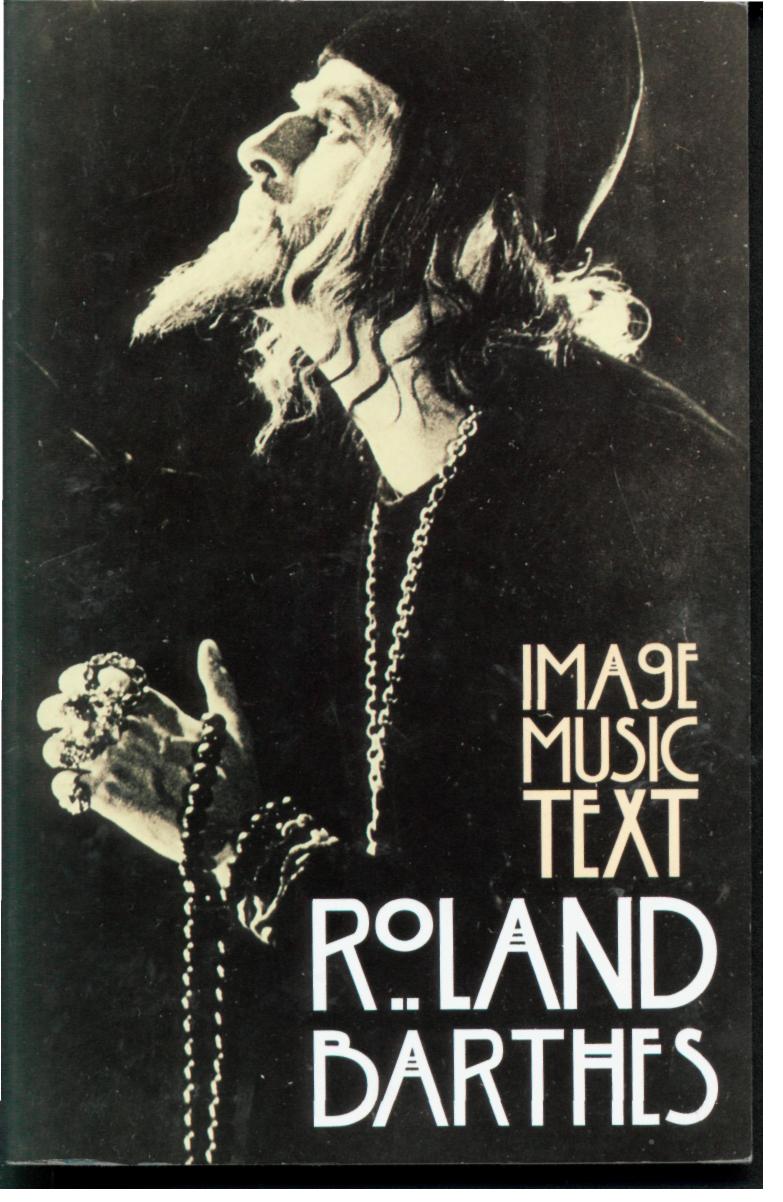Image-Music-Text by Roland Barthes

Author:Roland Barthes
Language: eng
Format: azw3, pdf
Tags: Semiotics & Theory, Performing Arts, Literary Criticism, General
ISBN: 9780374521363
Publisher: Farrar, Straus and Giroux
Published: 1978-06-30T23:00:00+00:00
112 | IMAGE - MUSIC - TEXT
is not who writes (in real life) and who writes is not who is.
1
In fact, narration strictly speaking (the code of the nar-
rator), like language, knows only two systems of signs:
personal and apersonal. These two narrational systems do
not necessarily present the linguistic marks attached to
person (/) and non-person (he): there are narratives or at
least narrative episodes, for example, which though written
in the third person nevertheless have as their true instance
the first person. How can we tell? It suffices to rewrite the
narrative (or the passage) from he to /: so long as the
rewriting entails no alteration of the discourse other than
this change of the grammatical pronouns, we can be sure
that we are dealing with a personal system. The whole of
the beginning of Goldfinger, though written in the third
person, is in fact 'spoken' by James Bond. For the instance
to change, rewriting must become impossible; thus the
sentence 'he saw a man in his fifties, still young-looking...'
is perfectly personal despite the he ('I, James Bond, saw...'),
but the narrative statement 'the tinkling of the ice against
the glass appeared to give Bond a sudden inspiration'
cannot be personal on account of the verb 'appeared',
it (and not the he) becoming a sign of the apersonal.
There is no doubt that the apersonal is the traditional mode
of narrative, language having developed a whole tense
system peculiar to narrative (based on the aorist
2
), designed
to wipe out the present of the speaker. As Benveniste puts
it: 'In narrative, no one speaks.' The personal instance
(under more or less disguised forms) has, however, gradually
invaded narrative, the narration being referred to the hie
et nunc of the locutionary act (which is the definition of
the personal system). Thus it is that today many narratives
1. J. Lacan: 'Is the subject I speak of when I speak the same as the
subject who speaks?'
2. E. Benveniste, op. cit. [especially Chapter XIX].
Download
This site does not store any files on its server. We only index and link to content provided by other sites. Please contact the content providers to delete copyright contents if any and email us, we'll remove relevant links or contents immediately.
| Books & Reading | Comparative Literature |
| Criticism & Theory | Genres & Styles |
| Movements & Periods | Reference |
| Regional & Cultural | Women Authors |
4 3 2 1: A Novel by Paul Auster(12326)
The handmaid's tale by Margaret Atwood(7703)
Giovanni's Room by James Baldwin(7241)
Asking the Right Questions: A Guide to Critical Thinking by M. Neil Browne & Stuart M. Keeley(5704)
Big Magic: Creative Living Beyond Fear by Elizabeth Gilbert(5671)
Ego Is the Enemy by Ryan Holiday(5340)
The Body: A Guide for Occupants by Bill Bryson(5023)
On Writing A Memoir of the Craft by Stephen King(4889)
Ken Follett - World without end by Ken Follett(4680)
Adulting by Kelly Williams Brown(4525)
Bluets by Maggie Nelson(4509)
Eat That Frog! by Brian Tracy(4477)
Guilty Pleasures by Laurell K Hamilton(4387)
The Poetry of Pablo Neruda by Pablo Neruda(4061)
Alive: The Story of the Andes Survivors by Piers Paul Read(3992)
White Noise - A Novel by Don DeLillo(3979)
Fingerprints of the Gods by Graham Hancock(3960)
The Book of Joy by Dalai Lama(3936)
The Bookshop by Penelope Fitzgerald(3810)
